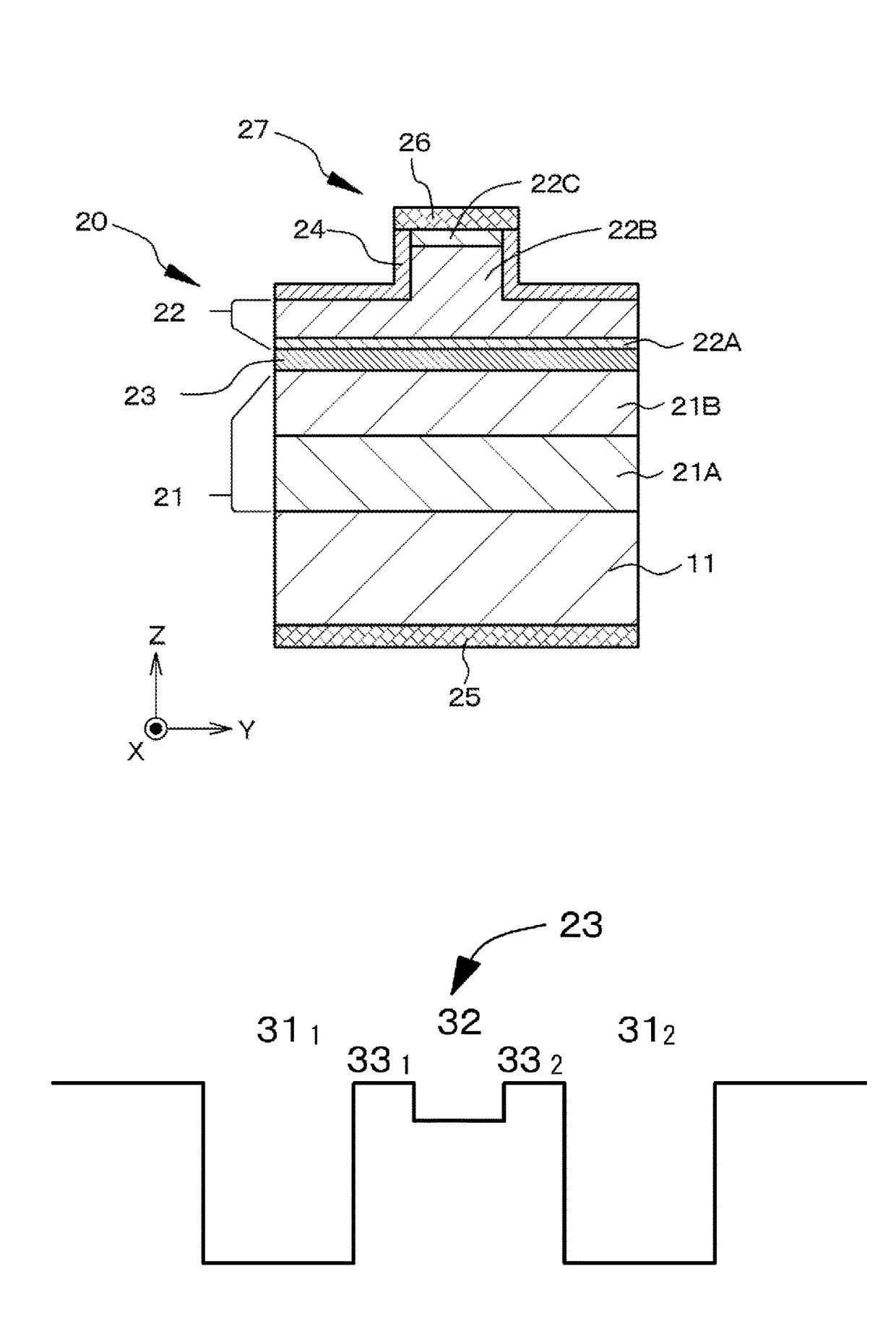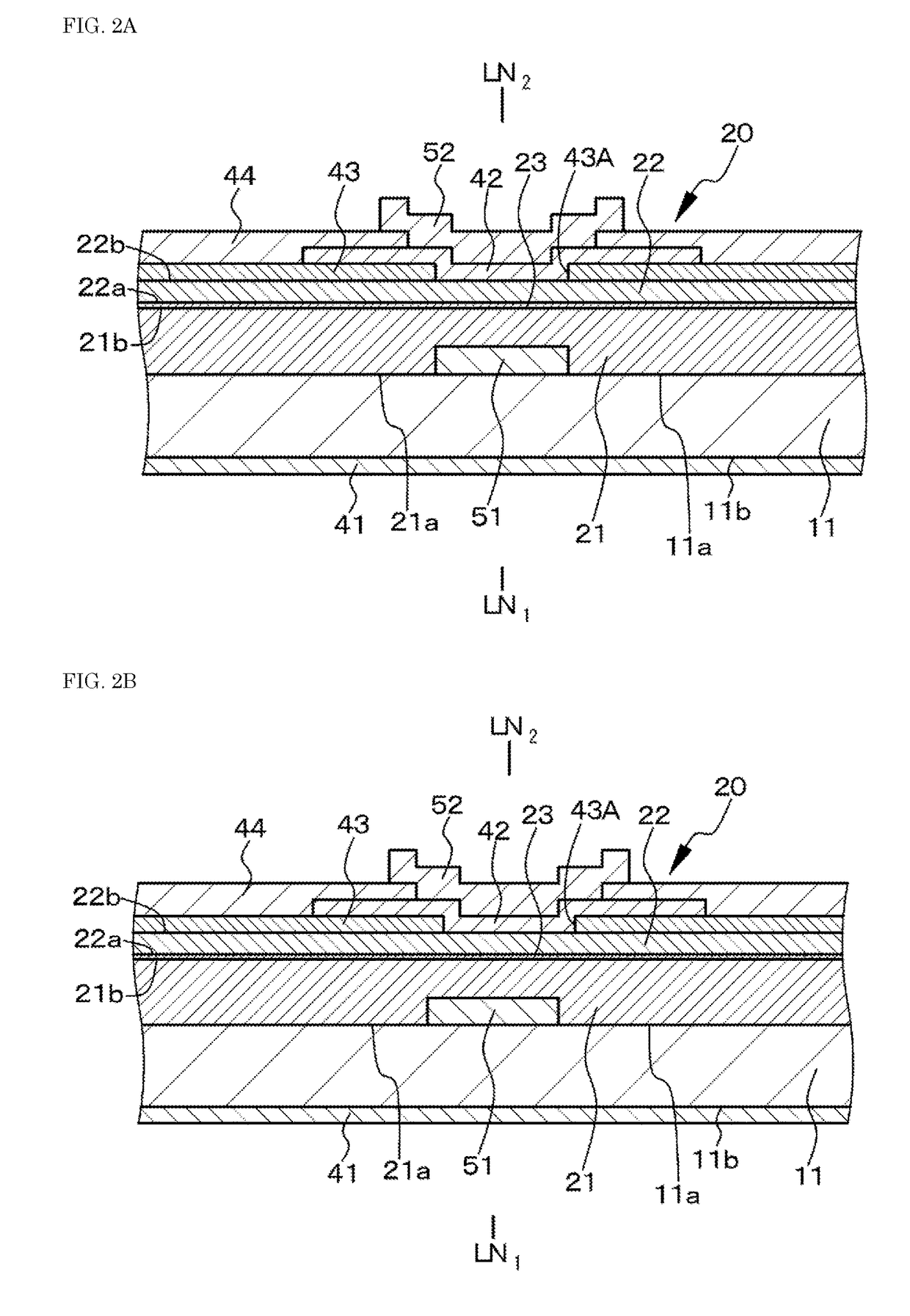Optical semiconductor device
- Summary
- Abstract
- Description
- Claims
- Application Information
AI Technical Summary
Benefits of technology
Problems solved by technology
Method used
Image
Examples
embodiment 1
[0058]Embodiment 1 relates to an optical semiconductor device, specifically to a semiconductor laser device (LD), according to the first aspect of the present disclosure. FIG. 1A is a schematic partial sectional view of an optical semiconductor device of embodiment 1, specifically a schematic partial sectional view of an optical semiconductor device taken along a virtual plane (YZ plane) perpendicular to the extending direction of a resonator and FIG. 1B is a schematic structural view of a multiquantum well structure in an active layer. FIG. 1B shows a band structure without considering the influence of piezoelectric fields for the sake of convenience.
[0059]The semiconductor optical device of embodiment 1 or embodiments 1 to 10 described later has a laminate structural body 20 in which an n-type compound semiconductor layer 21, an active layer 23, and a p-type compound semiconductor layer 22 are laminated in this order. The active layer 23 includes a multiquantum well structure havi...
embodiment 2
[0069]Embodiment 2 relates to an optical semiconductor device, specifically to a semiconductor laser device (LD), according to the second aspect of the present disclosure. In the optical semiconductor device of embodiment 2, the band gap energy of a well layer (the second well layer 312) adjacent to the p-type compound semiconductor layer is smaller than the band gap energy of another well layer (specifically, the first well layer 311) (see Table 4). Here, it is assumed that the configuration of an active layer 23 in the optical semiconductor device of embodiment 2 is as in Table 3. The emission wavelength of the semiconductor laser device of embodiment 2 is equal to or greater than 440 nm and is specifically 460 nm. Specifically, the band gap energy of the well layer (the second well layer 312) adjacent to the p-type compound semiconductor layer can be made smaller than the band gap energy of another well layer (specifically, the first well layer 310 by allowing the amount of suppl...
embodiment 3
[0071]Embodiment 3 relates to an optical semiconductor device, specifically to a semiconductor laser device (LD), according to the third aspect of the present disclosure. In the optical semiconductor device of embodiment 3, the thickness of a well layer (the second well layer 312) adjacent to the p-type compound semiconductor layer is greater than the thickness of another well layer (specifically, the first well layer 311). Here, it is assumed that the configuration of an active layer 23 in the optical semiconductor device of embodiment 3 is as in Table 5. The emission wavelength of the semiconductor laser device of embodiment 3 is equal to or greater than 440 nm and is specifically 460 nm. Specifically, the thickness of the well layer (the second well layer 312) adjacent to the p-type compound semiconductor layer can be made greater than the thickness of another well layer (specifically, the first well layer 311) by allowing the deposition time of the second well layer 312 to be lo...
PUM
 Login to View More
Login to View More Abstract
Description
Claims
Application Information
 Login to View More
Login to View More - R&D
- Intellectual Property
- Life Sciences
- Materials
- Tech Scout
- Unparalleled Data Quality
- Higher Quality Content
- 60% Fewer Hallucinations
Browse by: Latest US Patents, China's latest patents, Technical Efficacy Thesaurus, Application Domain, Technology Topic, Popular Technical Reports.
© 2025 PatSnap. All rights reserved.Legal|Privacy policy|Modern Slavery Act Transparency Statement|Sitemap|About US| Contact US: help@patsnap.com



